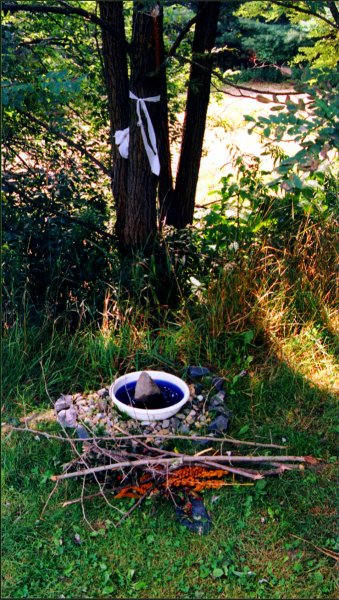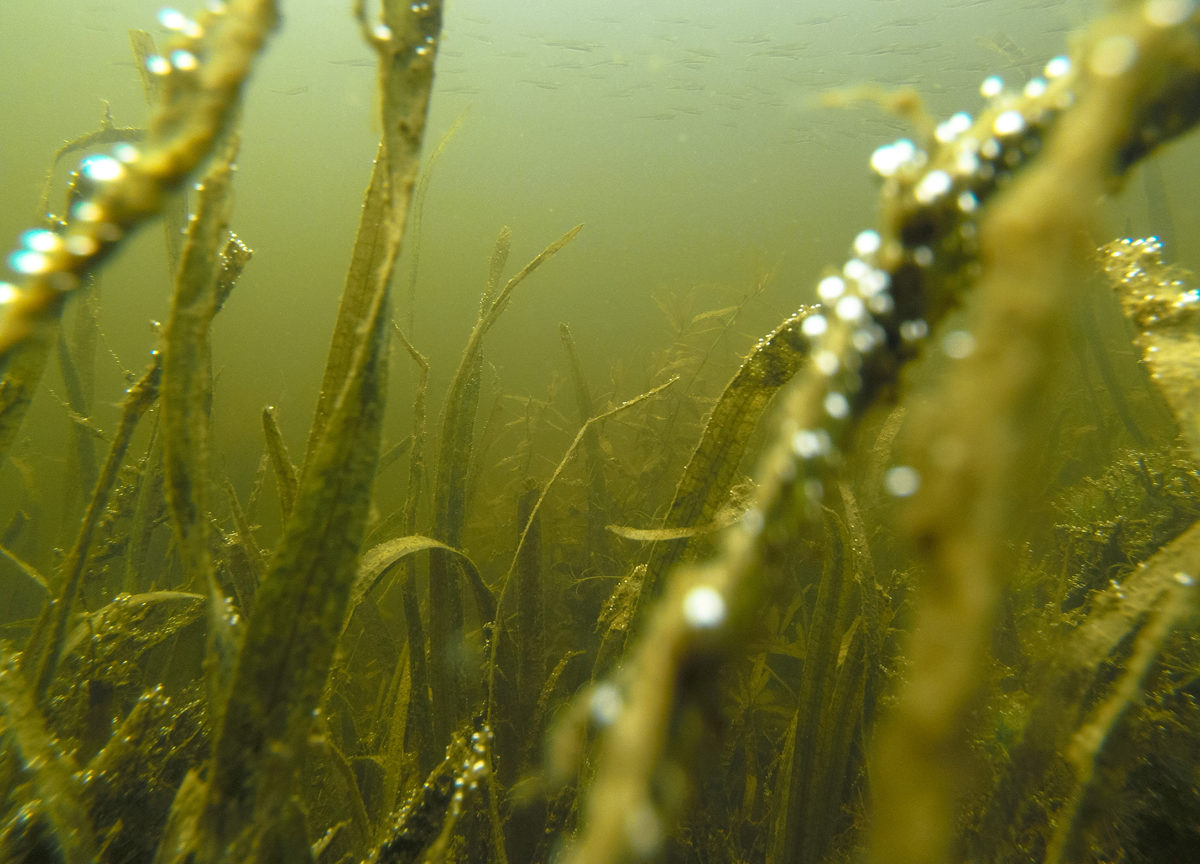If you came across a pile of stones, a small items placed in the limbs of a tree, coins randomly tossed on a street corner, would you necessarily recognize each to be a sacred site in order to commune with the divine? How are sacred spaces identified by a particular set of beliefs or practices?

“Seraphic Light”
mixed media installation
(temporary public art performance & installation over seven days)
dimensions variable
© 1999
One’s possible evolution…
Seraphic Light
The conceptual association of transcendence and art seems related to the widespread compositional mode in various African based arts. How one finds or recognizes revelatory experience in these sacred objects in which is hidden some mysterious power is a matter of belief and of art. One seeks this answer through an Africentric vision that is contained within the sacred verses of the Yoruba people. These verses point to people, places, and objects where the experience of revelation is made possible through a sacred reading as visible signs of that which is hidden. One maintains that the sacred texts, called Odu Ifa, contain four branches of knowledge: religion, history, medicine, and science.
Each morning at sunrise I took a quiet walk alone to collect fresh water from a small stream that ran through the green hills behind the campus of Vermont College, Montpelier, VT. This act of humility and discipline enacted in solitude allowed each day to begin with grace, with power, with ‘ashe,’ as I said a few words of thanks to the forces that guide and control our lives. The beginning point of this journey rests in the African Atlantic diasporaic and the continuing duality of that experience, as frustrating, yet rich and complex, as it is.
I propose that out of the negative plantation images that prevailed from the 1880’s – 1930’s the African Atlantic experience has transcended the stereotyping and has become politicized and increasingly multidimensional. This vision is rooted in African American realities that cannot be confined to modern or postmodern analysis.
This project originally appeared on my web pages, “Olokun Art Projects”, and was conceived as a way to sidestep the institutional context which many times has not been in my best interest.
This completed project is a serious attempt to write a re-evaluation of the art world’s tendency to consign simple categories of difference to work that finds relevance in, and identifies with, the Black Atlantic experience.
This is not meant as a diatribe or manifesto, but I am using the process(es) of making my art to indicate a new path in understanding the art of contemporary Black Atlantic culture.
The Odu contain four branches of knowledge: religion, history, medicine, and science.
… sensation, revelation, improvisation, sacrifice, path cleared, that’s Ejiogbe.
